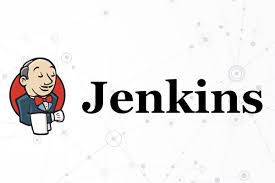A Comprehensive Guide to TensorFlow & Keras Mastery
- Steve Smith

- Oct 21, 2024
- 4 min read

The ability to leverage the capabilities of artificial intelligence (AI) & machine learning (ML) has become not only advantageous but also essential in this ever changing tech world. Consider setting out on a quest to become fluent in a language such as French. With so many vocabulary words & conjugations it could initially appear overwhelming. However fluency may be attained with the correct resources & practice. Similar to this learning TensorFlow & Keras can be daunting but with the right support & perseverance you can confidently traverse this challenging landscape.
Understanding the Frameworks
Understanding what TensorFlow & Keras are is crucial before delving deeply into them. TensorFlow is an open source machine learning platform created by Google Brain. It offers a complete ecosystem for creating training & implementing machine learning models. Consider it the sturdy base of a house sturdy reliable & appropriate for a range of building styles.
The high level API Keras on the other hand is built on top of TensorFlow. It streamlines the neural network development process so that users can concentrate more on the design & less on the finer points of the code. Keras is the sophisticated interior design that gives the house a warm & intuitive sense if TensorFlow is the framework.
Setting Up Your Environment
To start your journey you will need to set up your development environment. This includes installing Python TensorFlow & Keras. Think of this as laying the groundwork for your new home getting the necessary tools & materials in place. Here is a simple way to get started –
Install Python – Visit the official Python website to download the latest version. Make sure to add Python to your system path during installation.
Set Up a Virtual Environment – This helps in managing dependencies & keeping your projects organized. You can create one using venv or conda.
Install TensorFlow & Keras – Use pip to install TensorFlow & Keras with the following command –
pip install tensorflow keras |
Building Your First Model
Let us build your first neural network model now that you have the necessary equipment. This phase is similar to laying your home bricks; every choice you make has an impact on the stability & appearance of the structure. This is a straightforward example of how to construct a model for the MNIST dataset handwritten digit classification –
import tensorflow as tf from tensorflow import keras # Load the MNIST dataset mnist = keras.datasets.mnist (x_train, y_train), (x_test, y_test) = mnist.load_data() # Normalize the data x_train, x_test = x_train / 255.0, x_test / 255.0 # Build the model model = keras.Sequential([ keras.layers.Flatten(input_shape=(28, 28)), keras.layers.Dense(128, activation='relu'), keras.layers.Dense(10, activation='softmax') ]) # Compile the model model.compile(optimizer='adam', loss='sparse_categorical_crossentropy', metrics=['accuracy']) # Train the model model.fit(x_train, y_train, epochs=5) # Evaluate the model model.evaluate(x_test, y_test) |
In this code we load the dataset normalize it build a sequential model with hidden layers compile it & finally train it. Each step is crucial contributing to your models performance—much like ensuring every brick is laid correctly for the overall integrity of the structure.
You can also read this: What is TensorFlow?
Fine Tuning & Hyperparameter Tuning
Once you have a basic model the next step is fine tuning. This is like choosing the perfect color scheme for your home; it requires an eye for detail & a willingness to experiment. Hyperparameter tuning can significantly improve your models performance. You can adjust parameters like learning rate batch size & number of epochs.
Keras offers tools like Keras Tuner which helps automate this process. It searches for the best combination of hyperparameters to maximize your models accuracy.
Visualization & Model Evaluation
After building & training your model it is vital to evaluate its performance. This is akin to stepping back & assessing how your home looks from the curb. TensorFlow provides powerful visualization tools through TensorBoard. You can monitor training metrics visualize model architectures & even debug your models. To integrate TensorBoard simply add the following code before training your model –
tensorboard_callback = keras.callbacks.TensorBoard(log_dir='logs') model.fit(x_train, y_train, epochs=5, callbacks=[tensorboard_callback]) |
You can then run TensorBoard in your terminal with the command –
tensorboard --logdir=logs |
Deployment & Beyond
Once your model is fine tuned & evaluated the final step is deployment. Just as a finished home needs to be showcased your model should be made available for use. TensorFlow Online Training offers several deployment options including TensorFlow Serving which allows you to serve your models via REST API. Additionally platforms like TensorFlow Lite enable you to run models on mobile devices extending your reach to everyday users.
Final Comment
Gaining proficiency with TensorFlow & Keras is an educational & exploratory process. It takes time work & flexibility much like building a house. As you develop your abilities keep in mind that each line of code tweak & experiment adds to your overall proficiency.
Adopting these tools gives you & your company the ability to fully utilize AI & machine learnings amazing potential. You are about to experience something truly remarkable so get your hands dirty & begin creating your AI models!








Comments